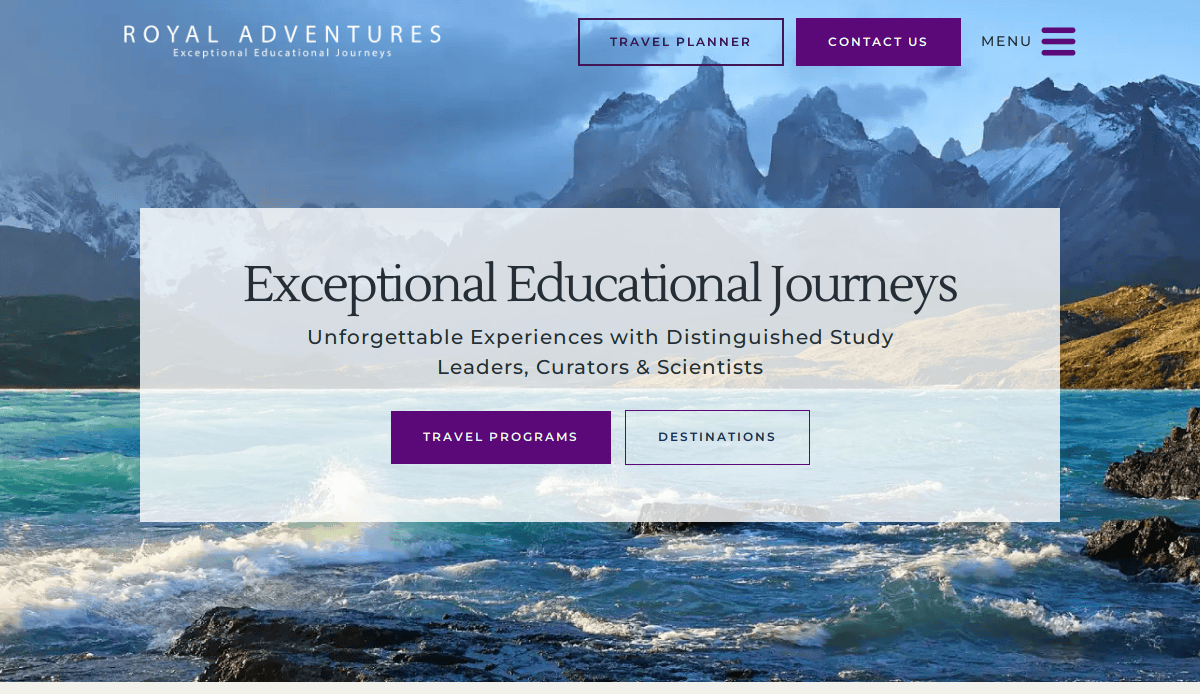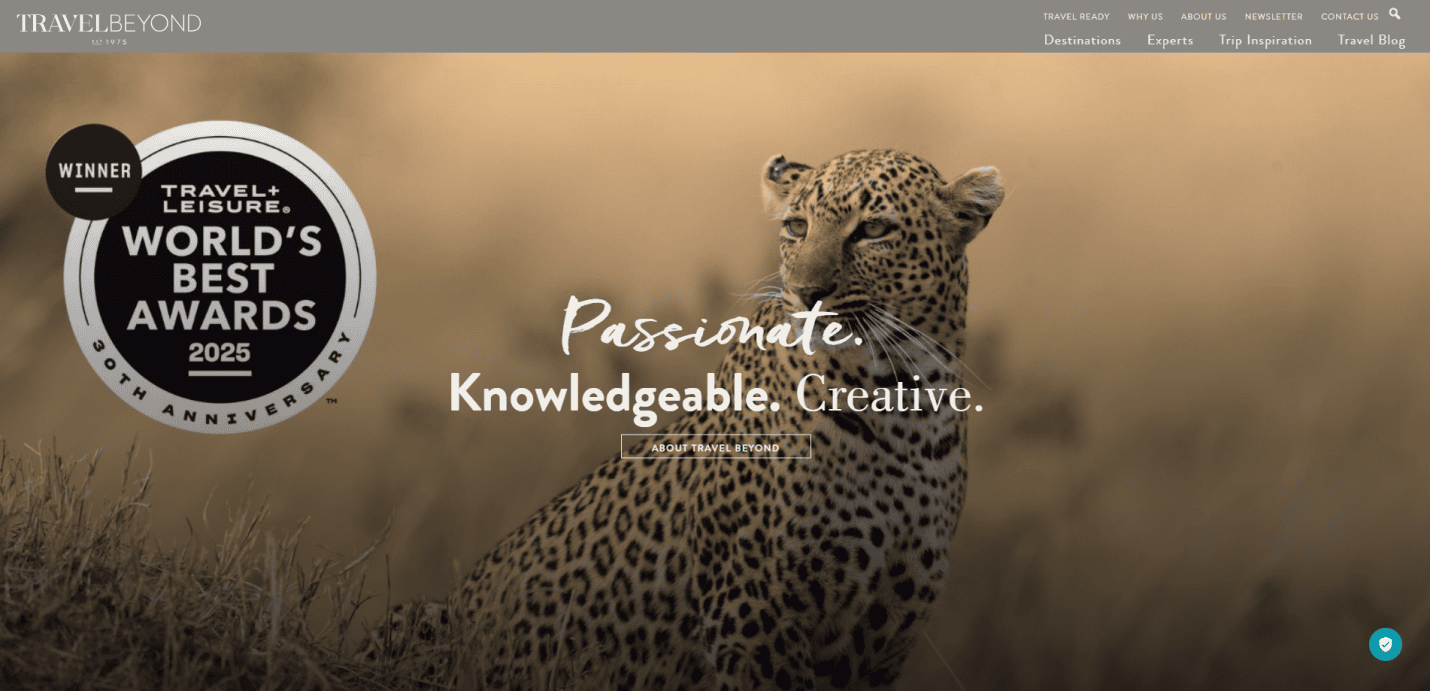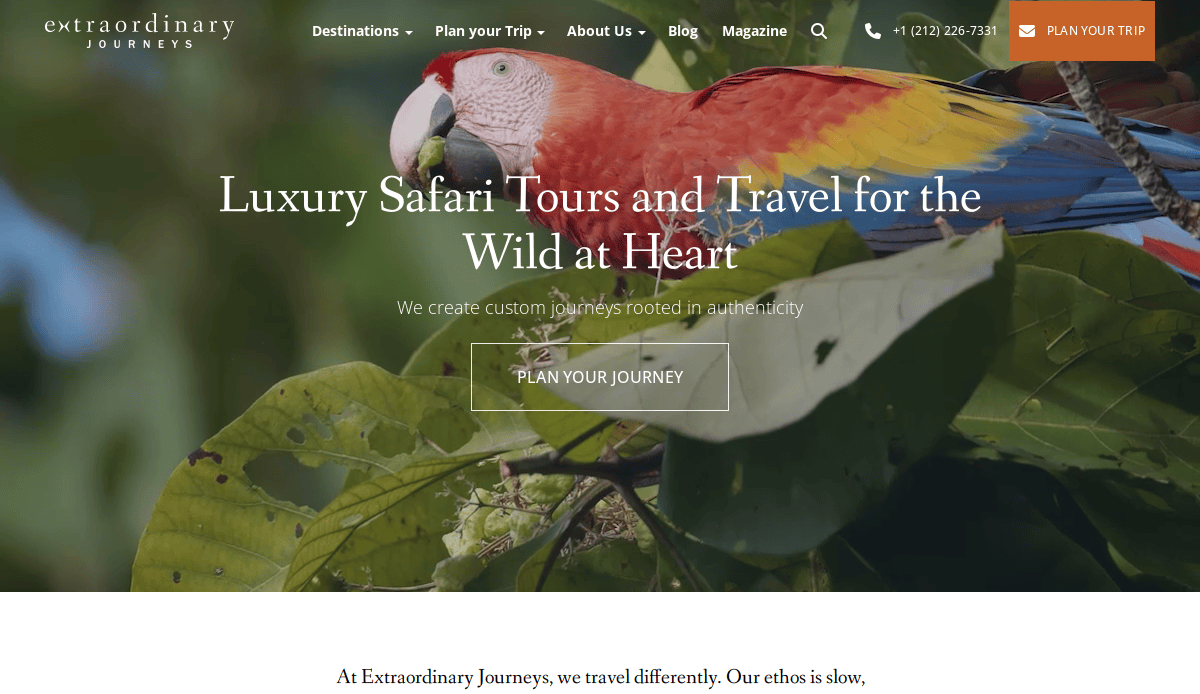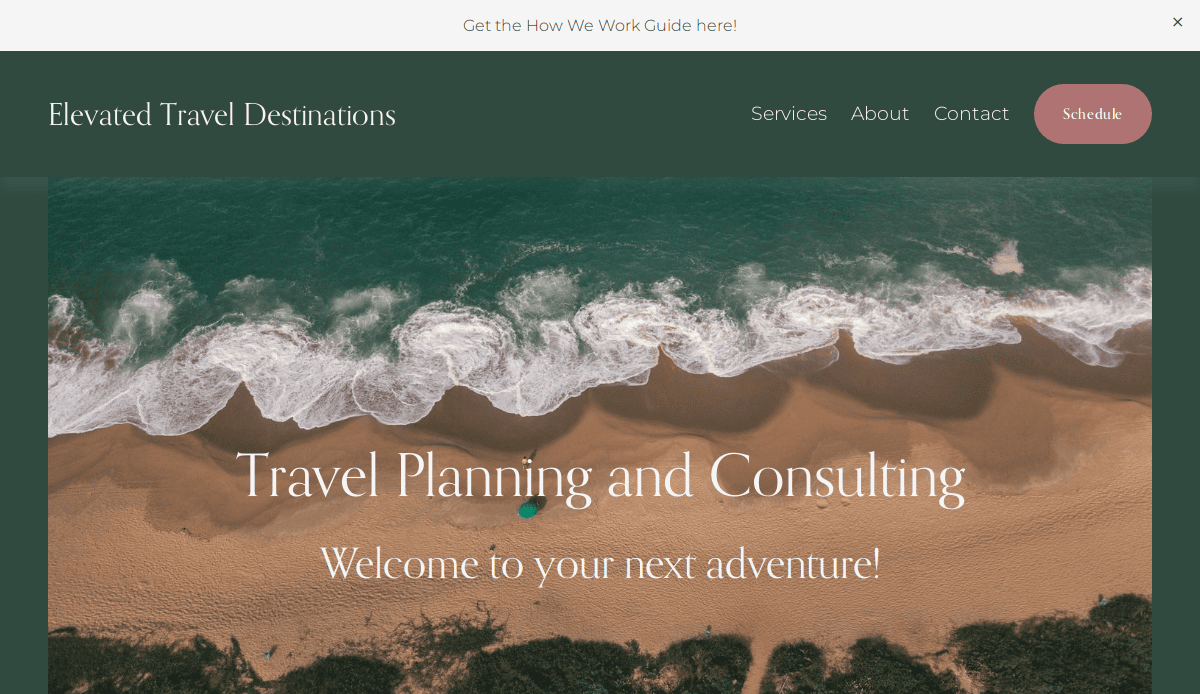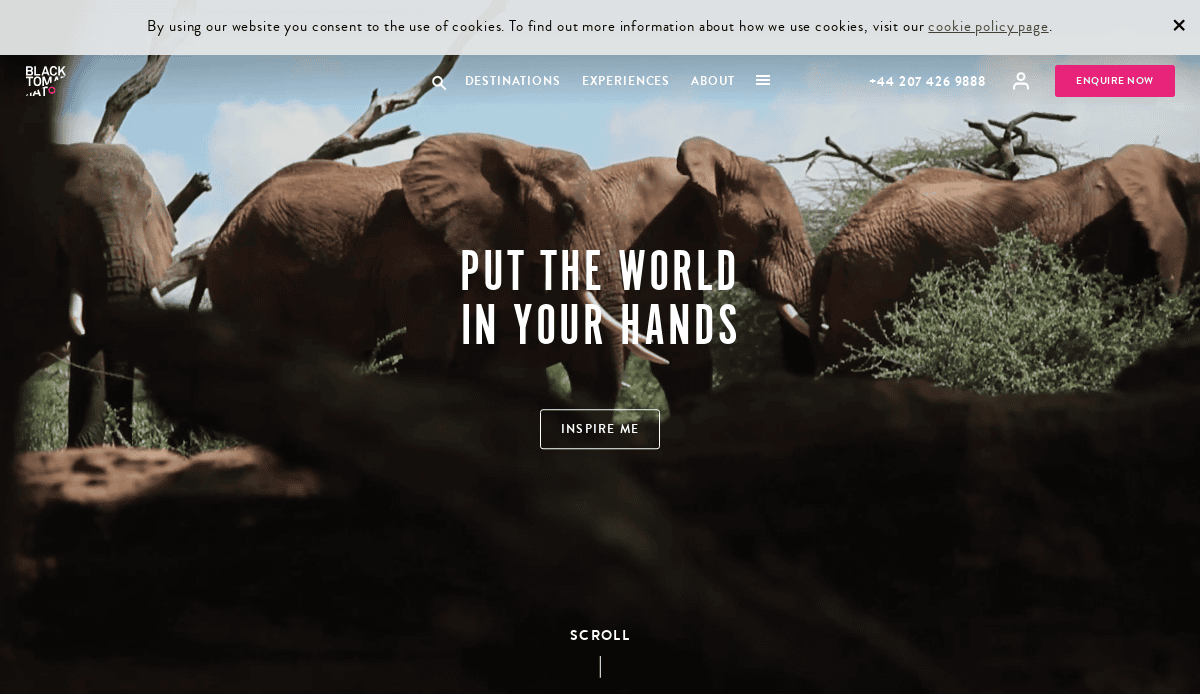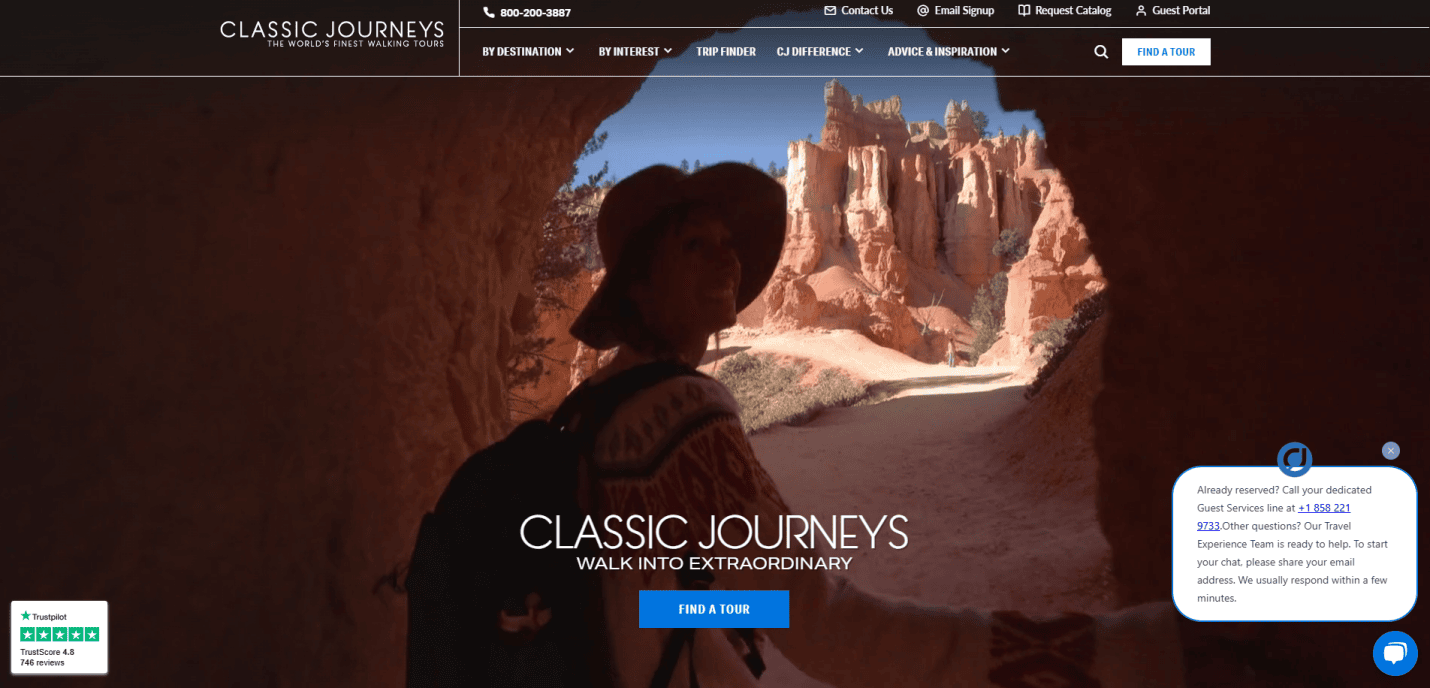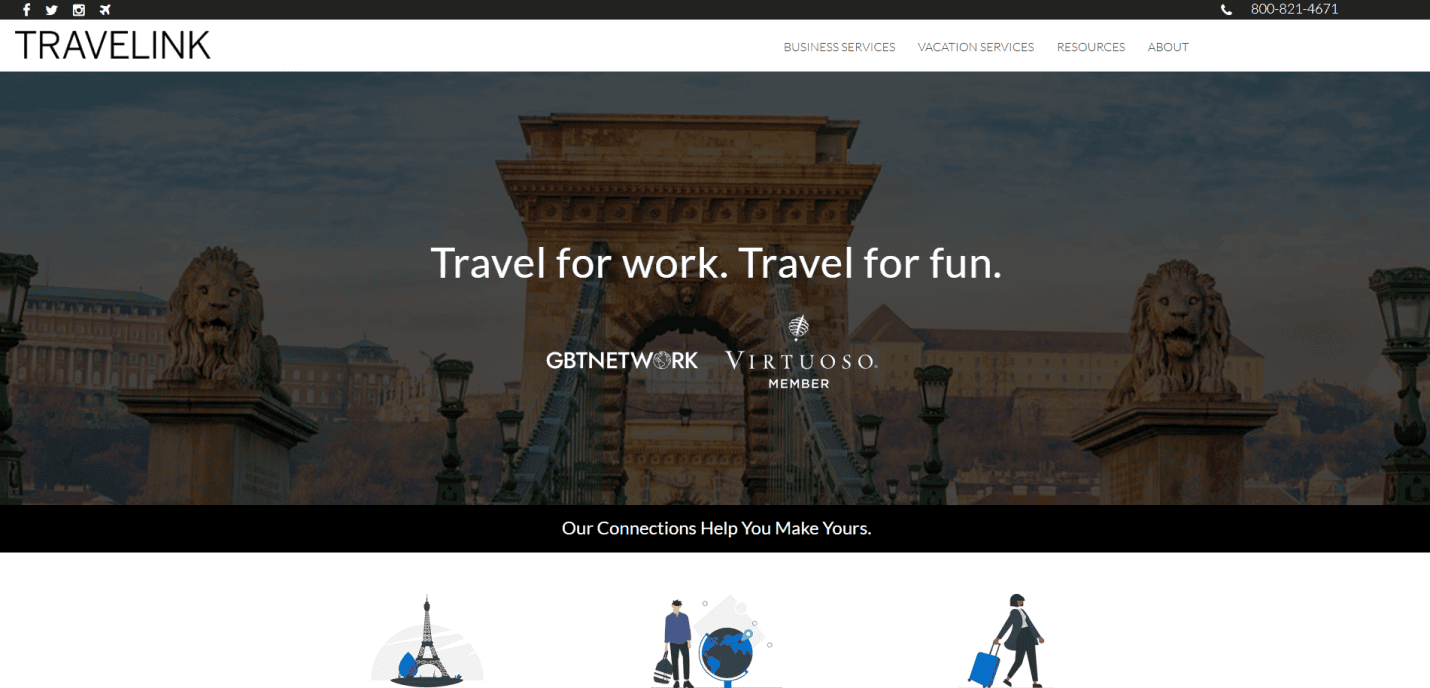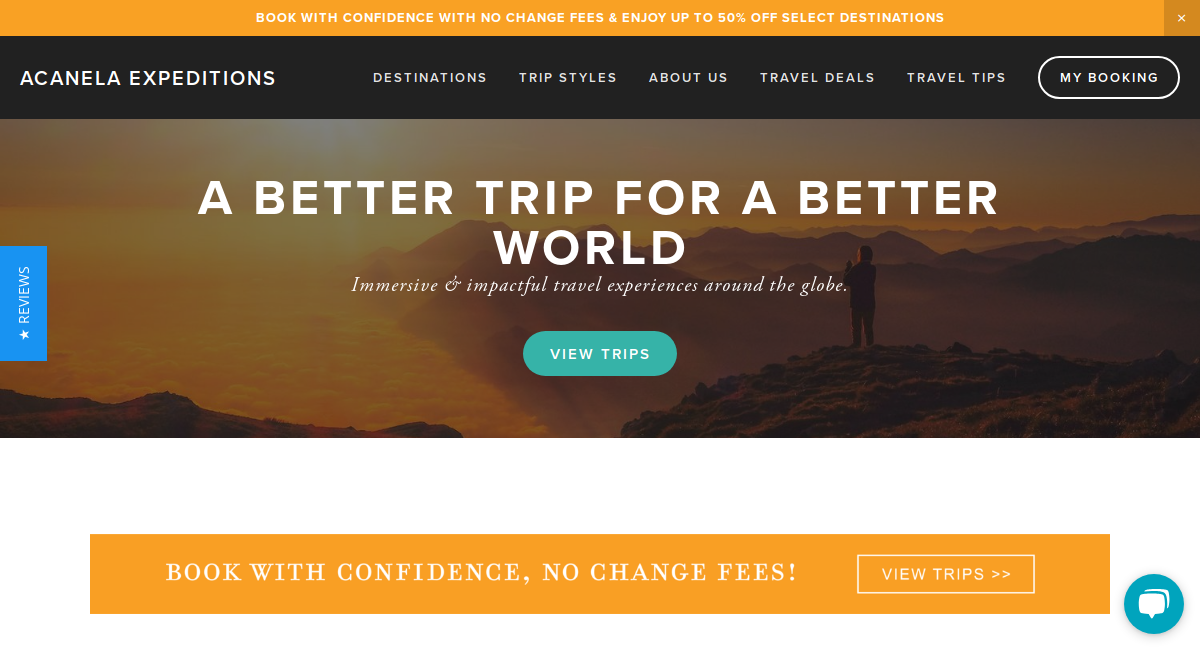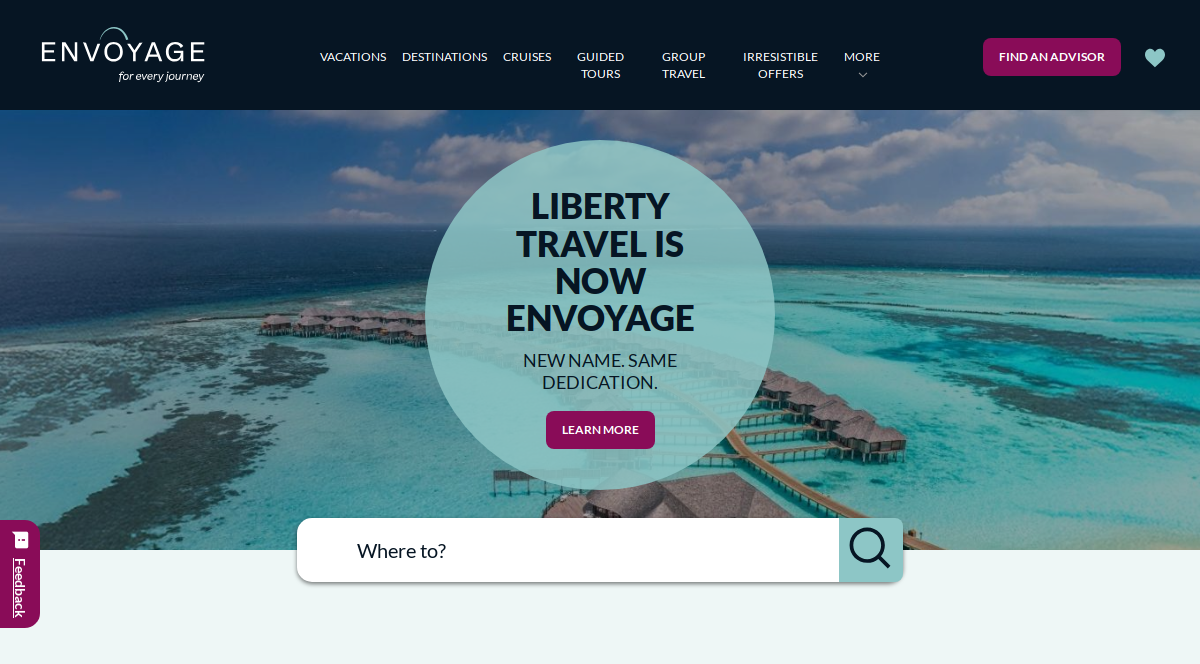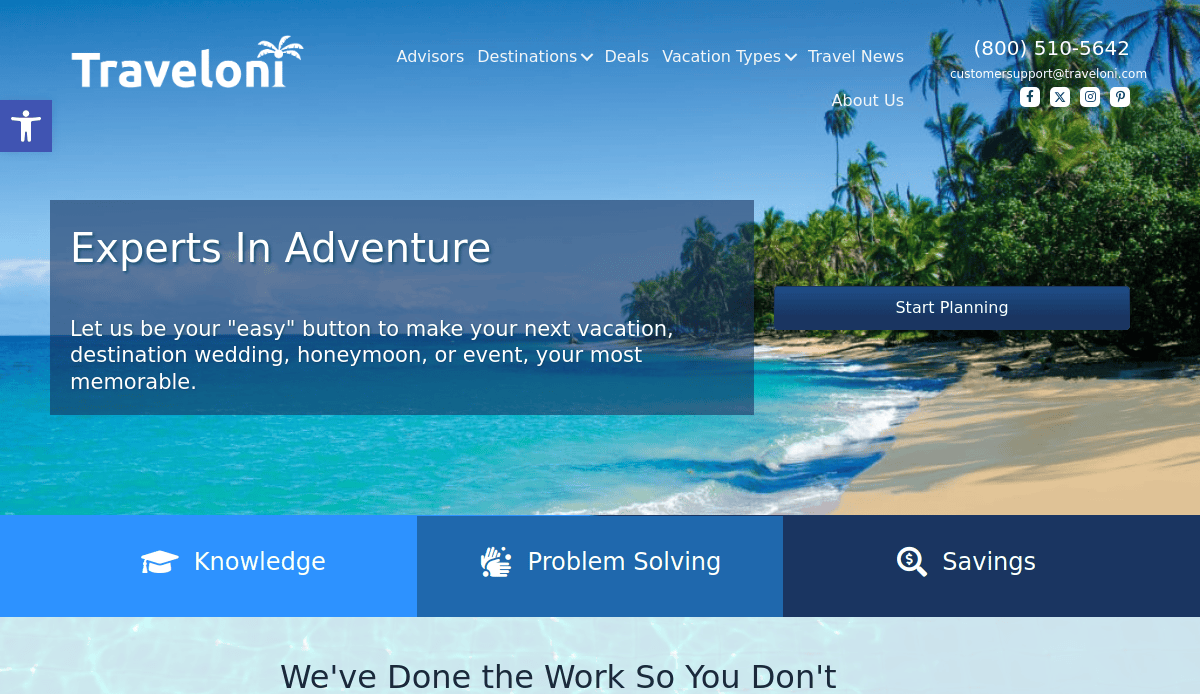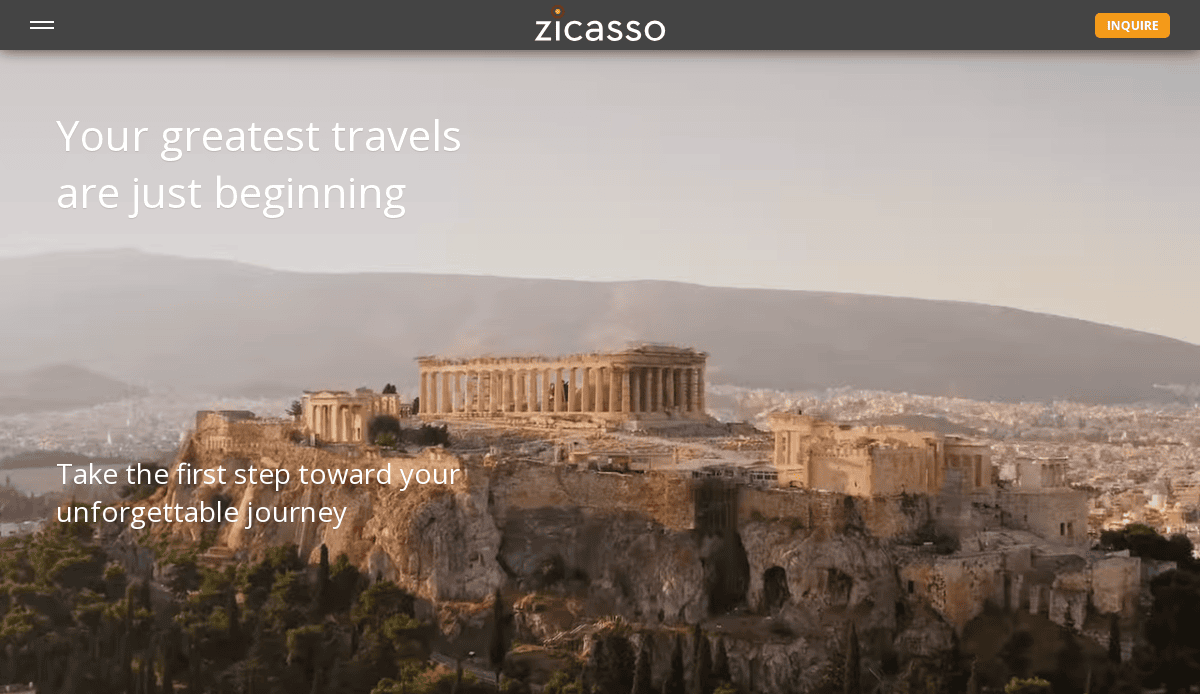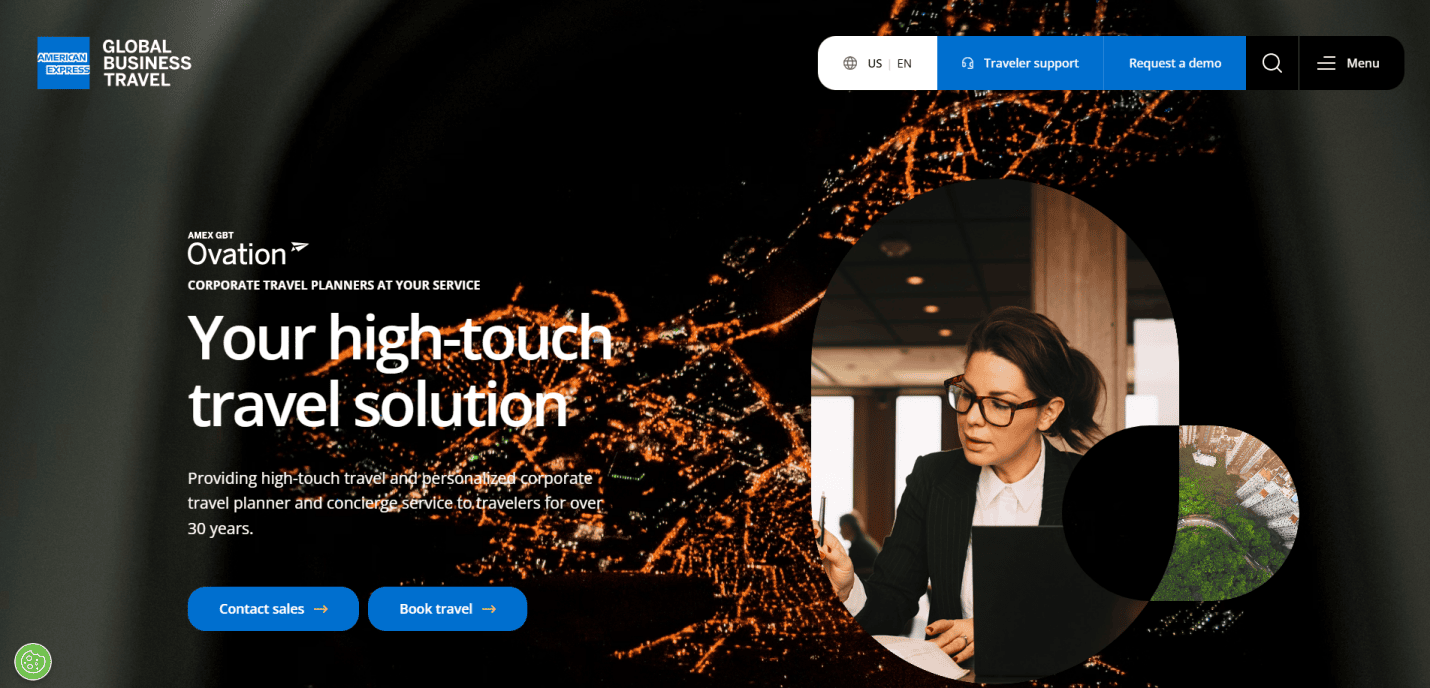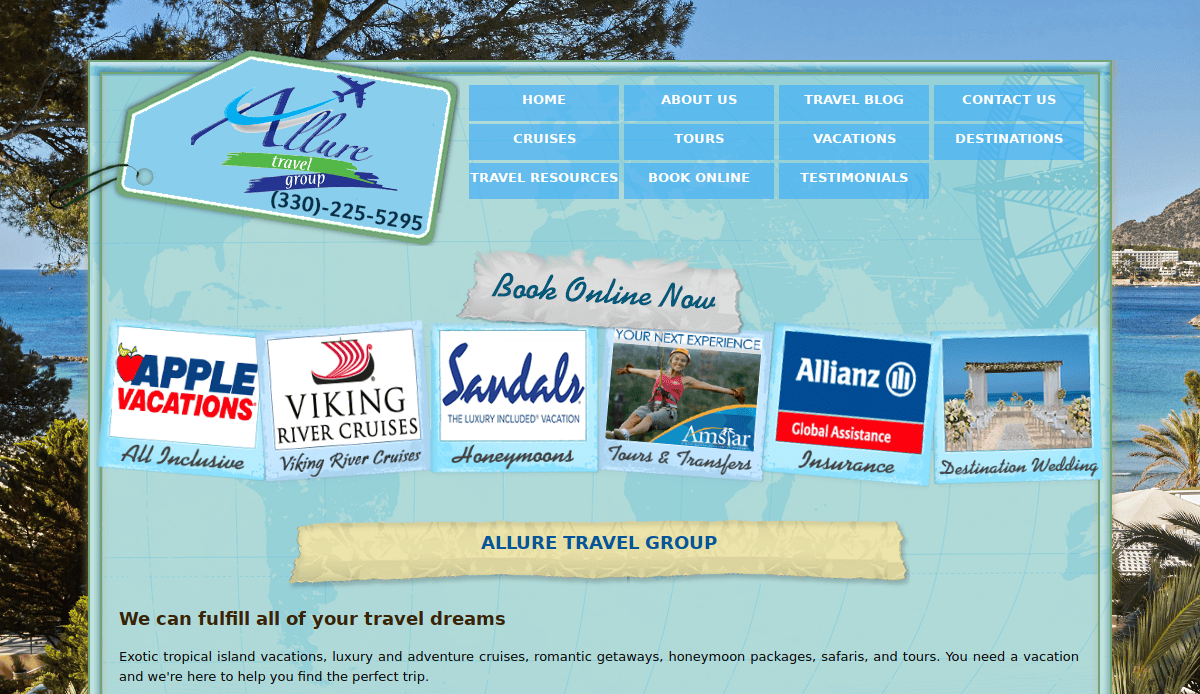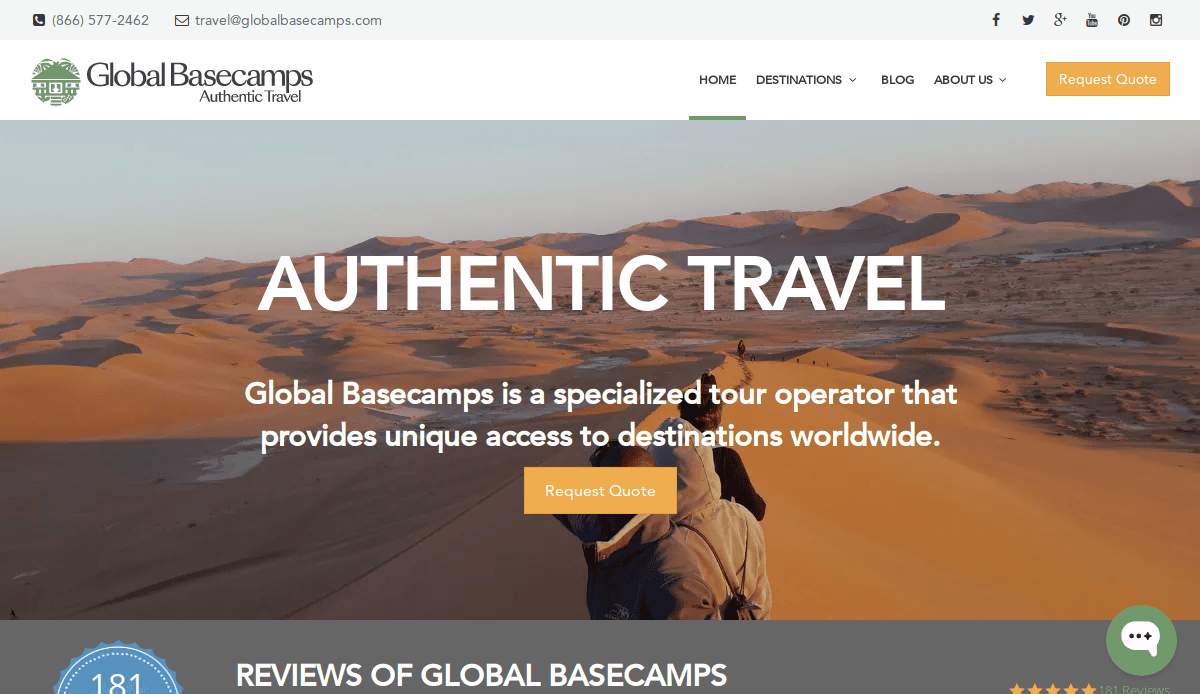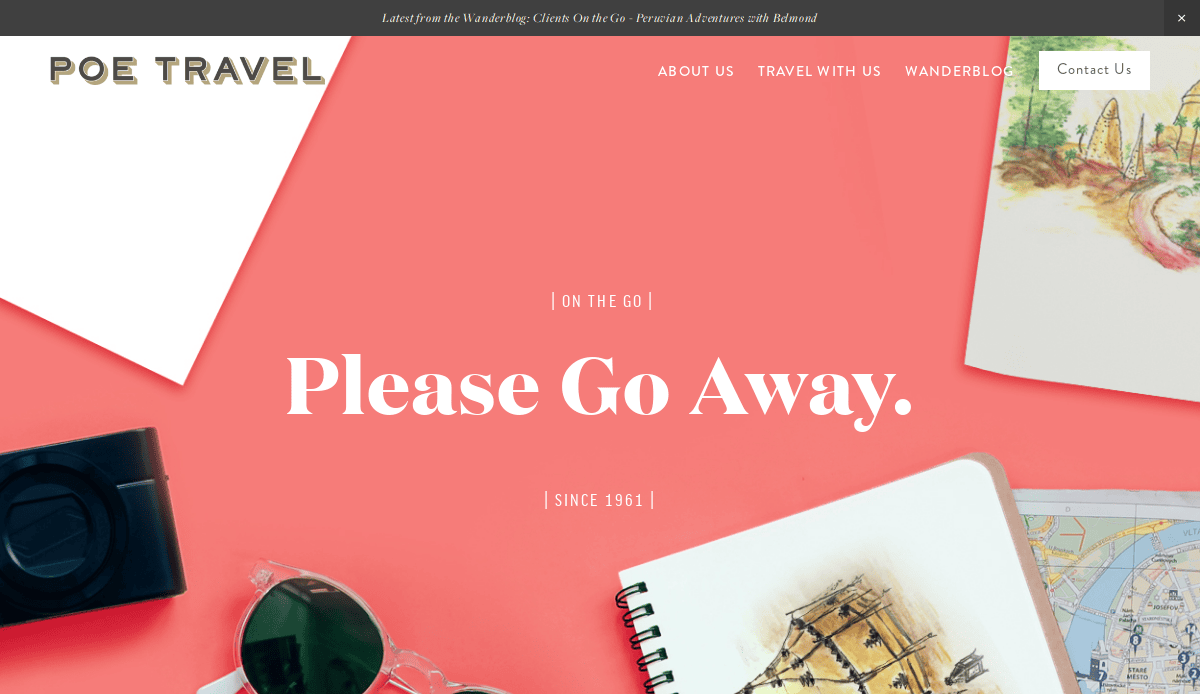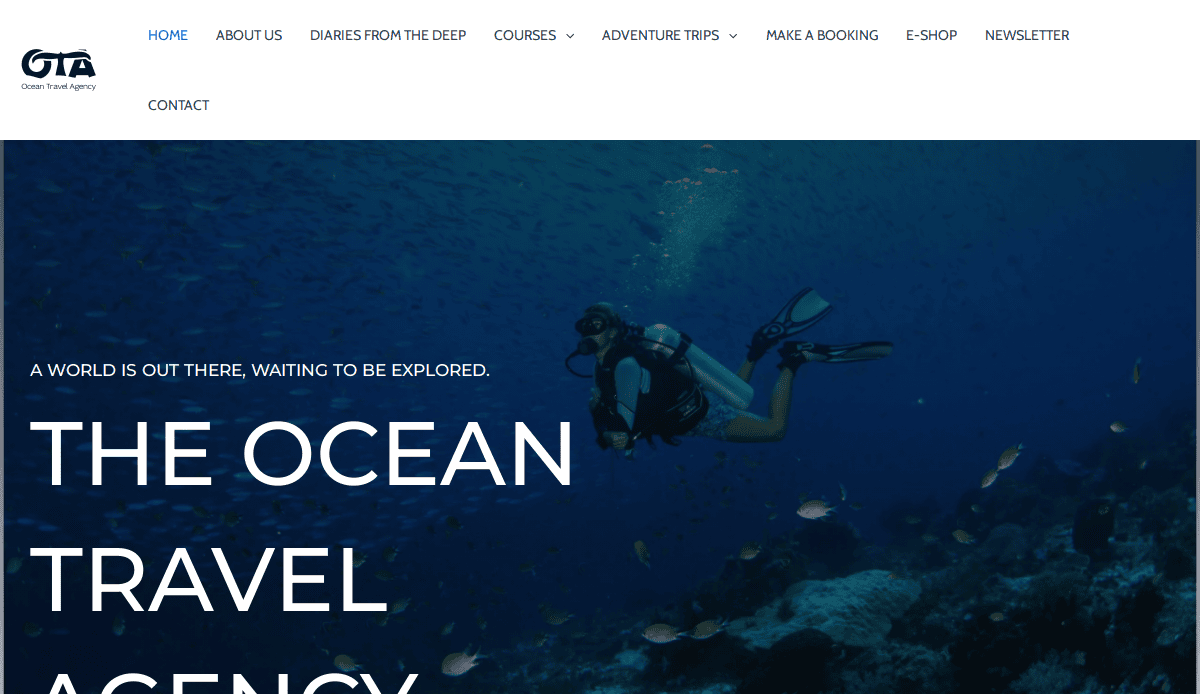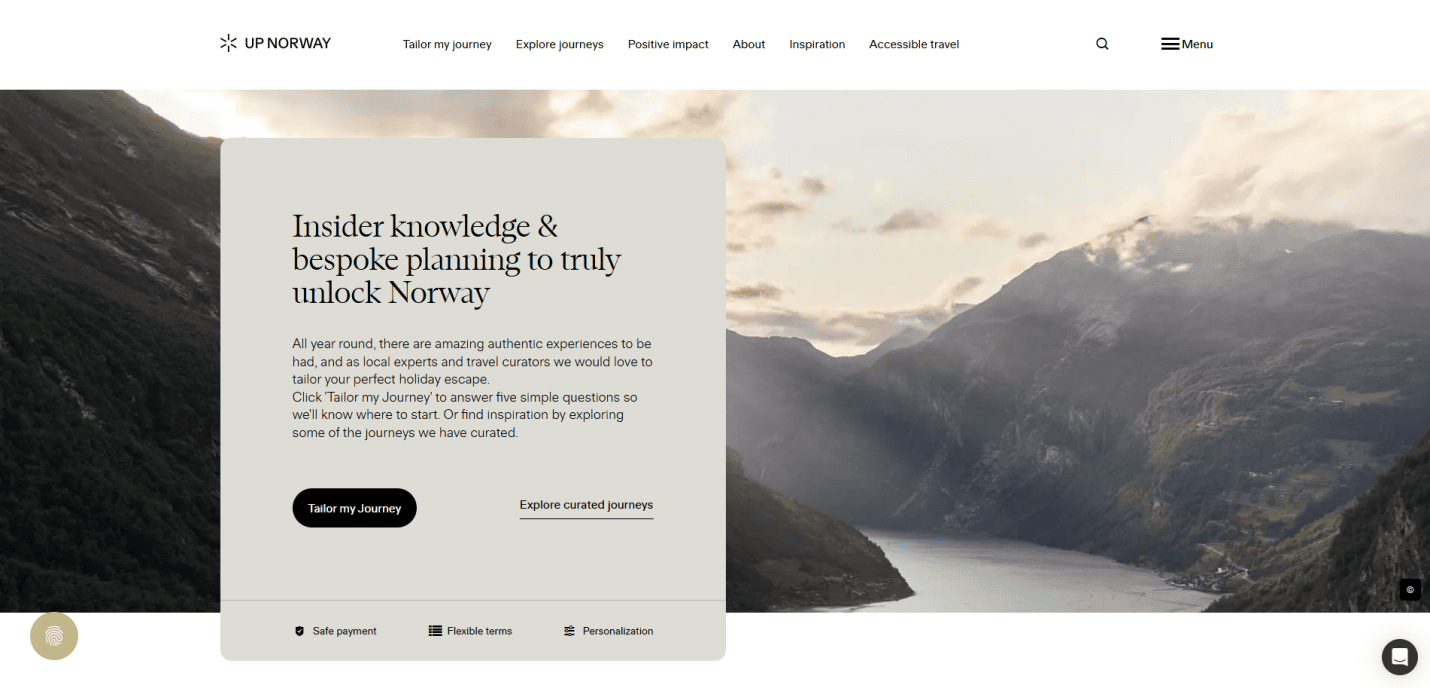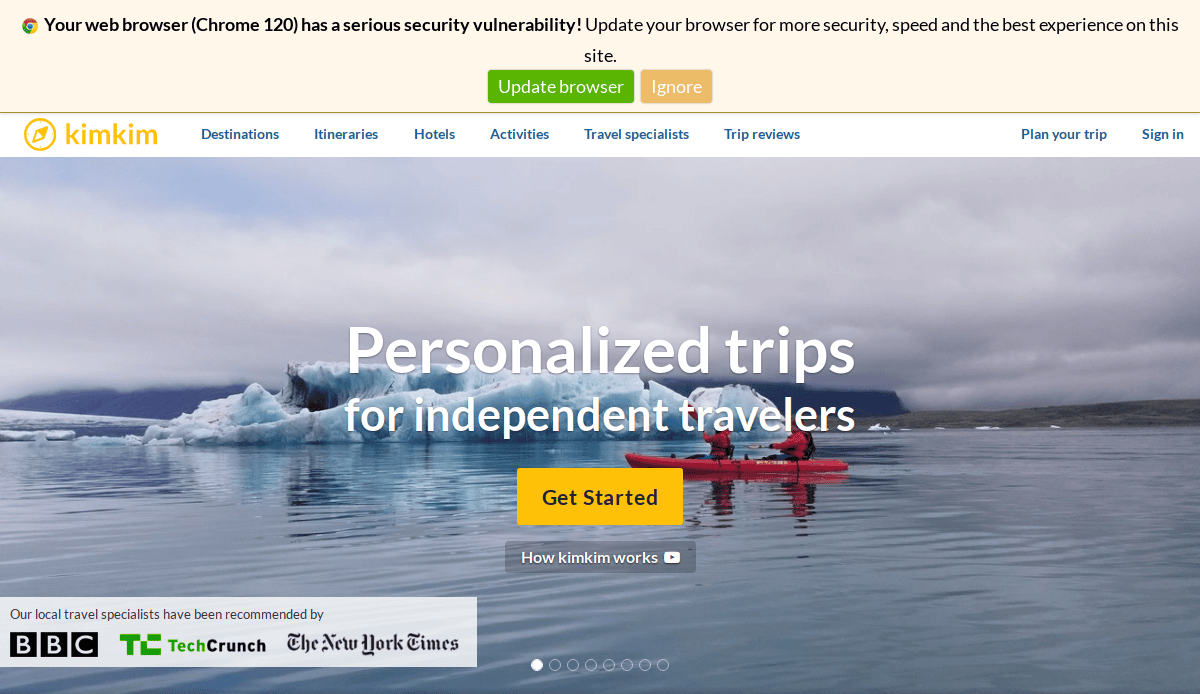Just looking for our Best Travel Agency Website examples list?
Why Your Travel Agency Website Design Can Make or Break Your Business
Your website is more than just an online brochure—it’s your agency’s storefront, lead generator, and conversion engine. Whether you’re selling luxury escapes or custom tours, a high-performing website is essential to compete, convert, and grow.
The right website design doesn’t just look good—it builds trust, improves usability, and turns browsers into buyers. With travelers relying on seamless online experiences to plan every detail, even the smallest design flaw can result in lost reservations and diminished credibility. That’s why investing in strategic, modern web design is one of the smartest decisions your agency can make.
Website Planning & Purpose: Setting the Foundation for Success
Before a single line of code is written or a layout is chosen, successful websites begin with a clear plan. Strategic planning ensures that the final product aligns with your agency’s goals, resonates with your target audience, and delivers measurable results.
Define Your Website’s Goals
Start by asking what your agency’s needs your website to achieve. Is the goal to generate new leads, showcase tour packages, allow online booking, or position your brand as a premium provider? Clear objectives guide every design and functionality decision.
Know Your Audience
Understanding who your visitors are—and what they expect—is central to building a successful site. Are you targeting luxury travelers, families, adventure seekers, or business clients?
Map Out the User Journey
Plan how visitors will interact with your site from the moment they land on the homepage. Identify the key pages they need to visit and the actions you want them to take.
Prioritize Functionality & Scalability
A travel website must do more than just look good—it must function flawlessly and be built to grow as your business scales.
Design Principles: Crafting a Visually Engaging and User-Focused Travel Website
Simplicity and Clarity
Prioritize whitespace, concise content, and consistent design elements. Every page should guide users toward a clear action.
Visual Hierarchy
Use size, color, and placement to direct attention to key areas such as CTAs, promotions, or featured destinations.
Brand Consistency
Visual identity—colors, fonts, imagery—must align with your agency’s unique style and values.
Responsive & Mobile-First Design
Ensure optimal viewing across all devices with fast-loading, tap-friendly mobile experiences.
Accessibility and Inclusivity
Design your website for all users by incorporating high contrast, alt text, and keyboard navigation.
Trust Signals and Social Proof
Showcase real reviews, secure payment icons, and client success stories to boost trust.
Content & Navigation: Structuring a Seamless Journey for Your Users
Clear, Logical Navigation
Limit top-level navigation to essential categories and use clear labels. A sticky header improves mobile usability.
Purpose-Driven Content Strategy
Design landing pages with compelling CTAs, package information, testimonials, and trust elements.
Scannable Layout and SEO Integration
Use H1-H3 tags, bullet points, and optimized metadata to support SEO and improve readability.
Visuals That Guide the Story
Use images and icons to support content and help explain packages or services quickly.
Internal Linking Strategy
Link related blog posts, packages, and service pages to keep users engaged and improve SEO.
Visual Elements: Enhancing User Experience and Brand Impact Through Design
Inspire With High-Quality Imagery
Use professional images that match your brand’s tone and appeal to your target audience.
Use Video to Tell Your Story
Embed short videos that showcase destinations, client experiences, or behind-the-scenes agency insights.
Apply Consistent Branding Across Visuals
Align every visual asset with your overall brand style to reinforce recognition.
Prioritize Visual Hierarchy
Guide users through pages using layout, color, and image placement.
Integrate Icons and Infographics
Simplify details like itineraries and checkout processes with visual summaries.
Optimize for Performance
Ensure fast load times through image compression and lazy loading.
Ongoing WordPress Maintenance: Keeping Your Travel Website Secure, Fast, and Functional
Regular Updates
Maintain core files, themes, and plugins to patch vulnerabilities and ensure compatibility.
Security Monitoring
Protect customer data with firewalls, malware scanning, and secure backup protocols.
Performance Optimization
Speed up site load with image compression, caching, and database cleanup.
SEO Health
Maintain metadata, link integrity, and analytics tools to support visibility.
Booking System Reliability
Regularly test these automated engines, calendars, and payment systems for uninterrupted service.
User Experience Testing
Monitor UX flows after each update to ensure continued functionality and engagement.
Best Travel Agency Website Examples
1. Royal Adventures Travel
Location: San Francisco, CA
Key Takeaways:
- Professional layout with high-end branding appeal
- Seamless mobile navigation
- Strong booking CTA above the fold
2. Travel Beyond
Location: Minneapolis, MN
Key Takeaways:
- Clean and modern visual hierarchy
- Inspiring destination photography
- Trust-building client testimonials
3. Extraordinary Journeys
Location: New York, NY
Key Takeaways:
- Luxury travel appeal with elegant design
- Story-driven content approach
- Curated travel experiences by destination
4. Elevated Travel Destinations
Location: Chicago, IL
Key Takeaways:
- High-impact hero image with overlay CTA
- Engaging icons and interactive map features
- Custom travel booking integration
5. Black Tomato
Location: Brooklyn, NY
Key Takeaways:
- Elegant, immersive homepage design
- Bold use of whitespace and storytelling
- Strong sense of brand identity
6. Classic Journeys
Location: La Jolla, CA
Key Takeaways:
- Easy-to-navigate layout with defined categories
- Family travel appeals with flexible tour packages
- High readability with large fonts and concise copy
7. Travelink
Location: Nashville, TN
Key Takeaways:
- Integrated travel blog for SEO and engagement
- Beautiful visuals that inspire exploration
- Clear hierarchy of services and packages
8. Acanela Expeditions
Location: Salt Lake City, UT
Key Takeaways:
- Vibrant visuals with cultural appeal
- Booking website with real-time pricing
- Strong use of social proof throughout
9. Liberty Travel
Location: Montvale, NJ
Key Takeaways:
- Recognizable brand with robust resources
- Online travel agency experience with live agents
- Powerful CTAs across every page
10. Traveloni
Location: Chicago, IL
Key Takeaways:
- Customizable design with prominent booking tool
- Trust-building with visible contact and reviews
- Family travel features with inclusive content
11. Zicasso
Location: Mountain View, CA
Key Takeaways:
- Luxury travel matchmaking with curated itineraries
- Personalized call to action on homepage
- Streamlined quote request funnel
12. Ovation Travel
Location: New York, NY
Key Takeaways:
- Polished, professional design for business travelers
- Emphasis on corporate travel services
- Clear segmentation for traveler types
13. Allure Travel
Location: Omaha, NE
Key Takeaways:
- Warm and inviting design for leisure travelers
- Visually appealing with seasonal trip features
- Straightforward navigation for destination exploration
14. Global Basecamps
Location: Encinitas, CA
Key Takeaways:
- Focus on sustainable travel experiences
- Dynamic visuals with cultural authenticity
- Easy inquiry form integration
15. Poe Travel
Location: Little Rock, AR
Key Takeaways:
- Story-driven homepage with historic credibility
- Personalized service approach emphasized
- Clean layout that’s easy to navigate
16. The Ocean Travel Agency
Location: Miami, FL
Key Takeaways:
- Vibrant visuals for tropical destinations
- Clear CTAs for cruise and resort packages
- Consistent branding across every page
17. Up Norway
Location: New York, NY
Key Takeaways:
- Focus on curated, immersive travel experiences
- Use of interactive visuals and storytelling maps
- Clear trip customization flow
18. Kimkim
Location: Cambridge, MA
Key Takeaways:
- Traveler-focused booking system with live planning
- Effective use of user reviews for trust
- Responsive, mobile-first design
19. Tully Luxury Travel
Location: Boca Raton, FL
Key Takeaways:
- Ultra-premium branding with visual storytelling
- Simple yet elegant navigation for high-end clients
- Captivating homepage with immersive video
These examples illustrate how a well-executed travel website—whether built with a robust website builder or designed completely custom—can elevate your online presence and convert potential clients into loyal travelers. Let me know if you want these in downloadable format or as an image-rich gallery.
Ready to Build a User-Friendly Travel Agency Website That Converts?
Designing a successful travel agency website isn’t about choosing a flashy template or using just any website builder—it’s about strategically creating a user-friendly platform that drives real business results. From visual storytelling and intuitive navigation to mobile optimization and seamless booking, every detail matters. A well-designed website doesn’t just showcase your brand—it establishes credibility, enhances customer trust, and turns clicks into sales.
If your current travel website feels outdated, hard to manage, or isn’t generating the leads you expect, now is the time to take action. Whether you’re launching a new site or reworking an old one, we provide expert design and development services tailored to your goals, with a focus on performance, branding, and ease of use.
Let’s build a travel website that works as hard as you do. Contact us to get started today.
Frequently Asked Questions About Travel Industry Site Design
What makes a website successful?
A successful travel site balances visual appeal, usability, and performance. It should be mobile-responsive, easy to navigate, and designed with clear website features like booking tools, content management systems, and trust elements. Incorporating SEO, a clean and modern layout, and captivating website content helps increase traffic and drive conversions. Explore our travel website development services for custom solutions tailored to your travel business.
How do I create a custom website?
To create a custom website, start with strategic planning: define your audience, select a professional design, and integrate essential tools like booking engines and content management. Whether you’re launching a brand online or updating an existing travel site, working with an experienced team ensures your website stands out. Learn more about building your own travel website with our professionals.
What are some inspiring examples of travel agency websites?
The most inspiring examples of successful industry websites often combine luxury travel aesthetics with user-friendly functionality. Brands like Ocean Travel, Allure Travel, Liberty Travel, and Poe Travel feature beautiful websites with immersive visuals, streamlined travel booking, and seamless navigation. Check out our guide to the 25 Best Travel Agency Website Designs to see what makes each site effective.
Should I use a template or build a custom website?
Templates are a fast and affordable option to create your travel agency website, especially with platforms like Wix or other website builder tools. However, a custom website offers greater flexibility, professional-looking branding, and better performance optimization. For agencies offering creative travel or a wide range of services, a custom travel agency design is ideal to meet unique needs and scale with growth.
How does SEO impact my website?
SEO ensures your website ranks in search results when potential clients look for tour packages, hotel reservations, or car rentals. By optimizing for terms like “family travel,” “luxury travel,” or “travel agent website,” and improving technical elements, your site becomes easier to find. Strong SEO supports your overall online presence and boosts sales. Read about our digital marketing solutions that support SEO for the travel industry.
What content should I include on my travel website?
Your travel website should include destination pages, service listings, a travel blog, customer reviews, and clear CTAs. Write content that highlights expert travel knowledge, your travel experiences, and unique value propositions. Make sure your site includes easy access to contact information and uses visuals to enhance storytelling.
Can I integrate a travel app into my website?
Yes, integrating a travel app can enhance UX, especially for online booking, itinerary management, and destination guides. Whether you’re part of a custom agency or a larger travel company, app integrations support seamless travel planning and engagement.
How do I make sure my travel site is user-friendly?
Focus on clean design, fast load times, mobile responsiveness, and intuitive navigation. Use visuals and icons to guide users, and implement a logical structure with prominent CTAs. A user-friendly site helps your agency’s offerings feel more accessible and builds trust with site visitors.
What kind of hosting provider is best for a travel-based site?
Choose a hosting provider that offers reliability, fast performance, scalable bandwidth, and security features. Sites with dynamic content like booking engines or white label services need robust infrastructure to perform well, especially during high-traffic seasons.
How can I increase conversions on my travel booking website?
To increase conversions, create a professional design with trust signals, streamline your travel booking process, and make sure your site loads quickly. Include real-time availability, customizable options, and persuasive CTAs. Enhancing your site with expert copy, engaging visuals, and a strong user journey can make your site more effective at capturing leads.

